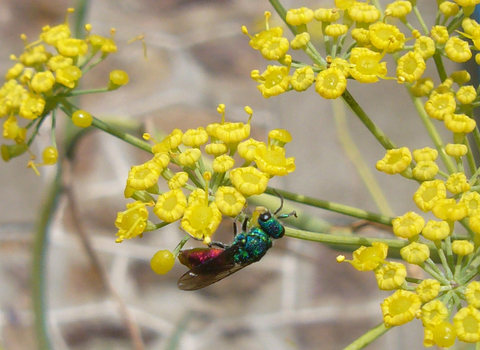
Ruby-tailed Wasp ©Skol-louarn
Ruby-tailed wasp
If seen up close, the glittering Ruby-tailed wasp is, perhaps, one of the UK's most beautiful insects. A solitary wasp, it can be found in sandy and rocky habitats like quarries, outcrops and walls.
Enw gwyddonol
Chrysis ignita agg.Pryd i'w gweld
April to SeptemberTop facts
Stats
Length: 1.1cmCommon.
